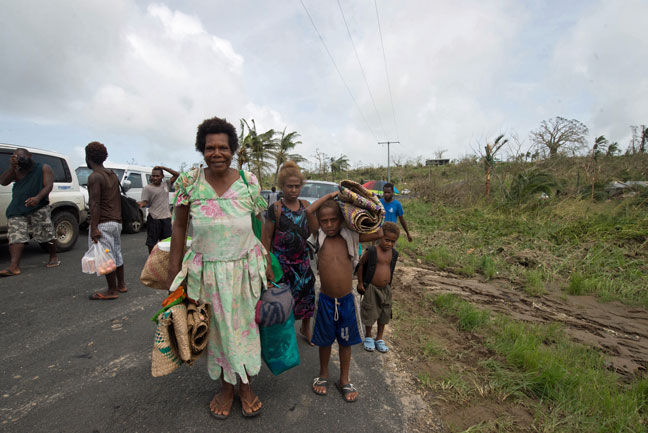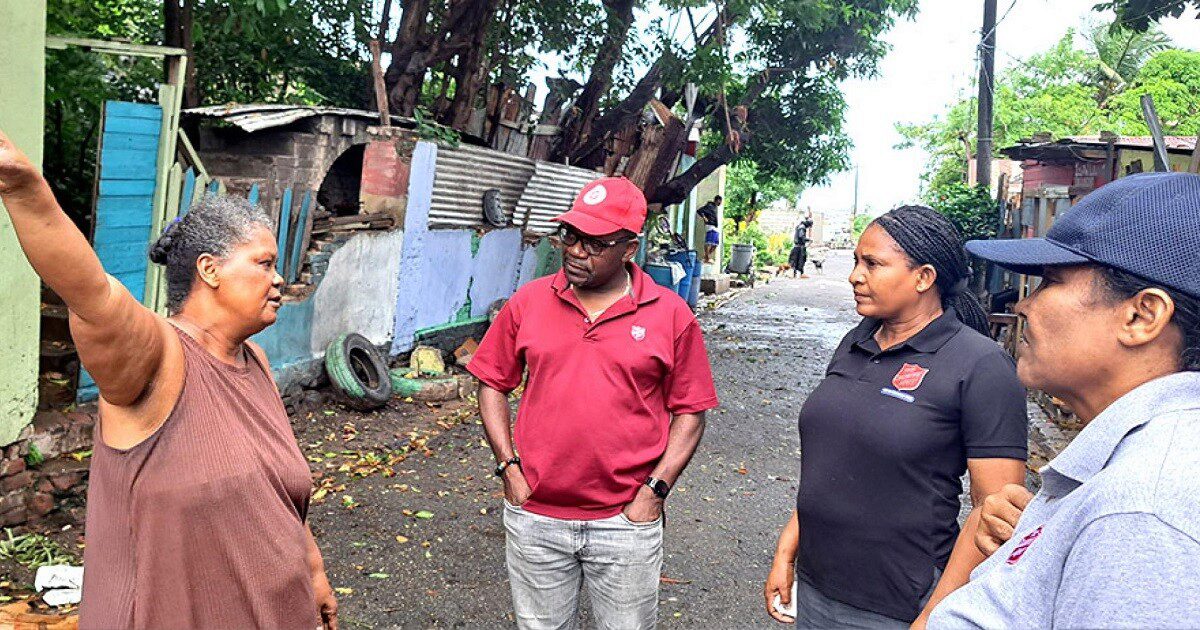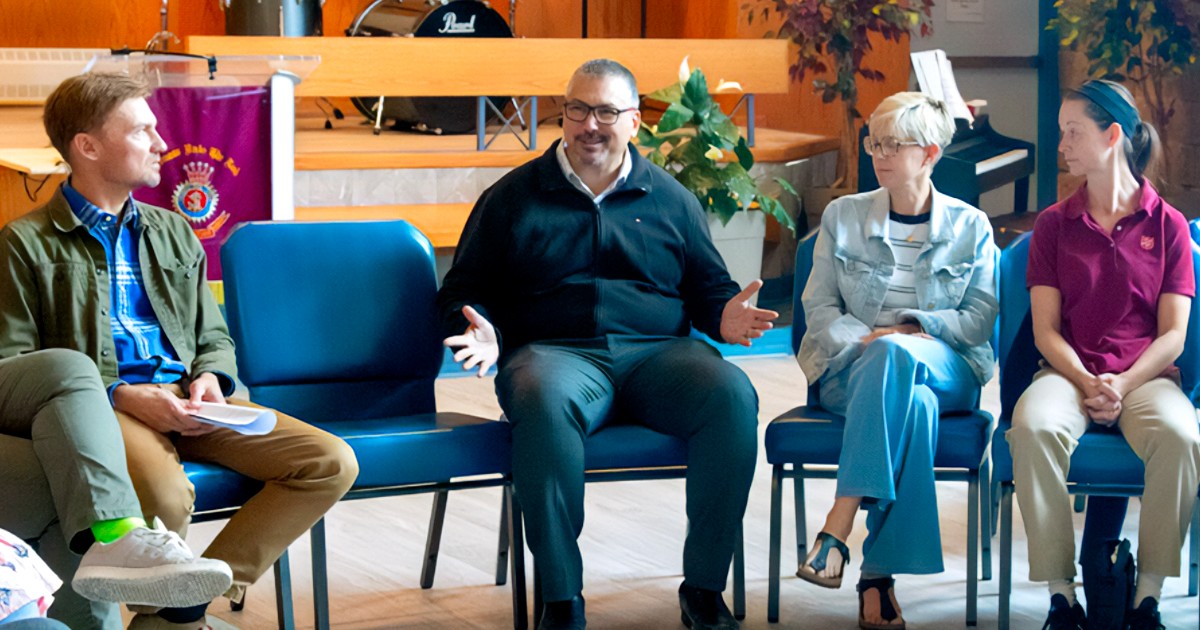Experienced emergency relief workers are currently on the way to Vanuatu to assess how The Salvation Army can help in the response to Cyclone Pam. The south Pacific nation was devastated by 300 kilometres-per-hour winds and storm surges, leaving thousands of people homeless. So far, it is believed that 11 people were killed in the disaster.
UNICEF (the United Nations Children's Fund) estimates that nearly 5,000 people across Vanuatu are without water. Much of the nation's infrastructure has been badly affected, with President Baldwin Lonsdale telling reporters that 90 percent of buildings in the capital, Port Vila, have been destroyed or badly damaged. Any response is made more difficult because Vanuatu is made up of a number of islands, with some communities completely isolated.
The Salvation Army does not currently work on Vanuatu, although in recent years there have been exploratory links and assistance provided through the Australia Eastern Territory. Because of this lack of personnel already in the country, The Salvation Army is looking to partner with World Vision in its initial response.
Damaris Frick (Field Officer for The Salvation Army's International Emergency Services) and Craig Arnold (a logistics specialist seconded from UPS) will reach Vanuatu tomorrow (Friday, March 20). They will work alongside Major Darren Elsley from Australia Eastern Territory and be joined on Monday by Captain Brad Watson from Australia Southern Territory. Together, the team will establish a base and accommodation, as well as linking up with the coordinating agencies, with whom contact has already been made. Attendance at cluster meetings will ensure that the various agencies work together in the most efficient way possible. An initial orientation and assessment will enable a first rapid response proposal to be drawn up to begin the supply of relief items as soon as possible.
The Australia Eastern Territory has already received a AUS$1 million donation for The Salvation Army's response on Vanuatu, but further funding is still being sought to help in the recovery and rebuilding of the country.
UNICEF (the United Nations Children's Fund) estimates that nearly 5,000 people across Vanuatu are without water. Much of the nation's infrastructure has been badly affected, with President Baldwin Lonsdale telling reporters that 90 percent of buildings in the capital, Port Vila, have been destroyed or badly damaged. Any response is made more difficult because Vanuatu is made up of a number of islands, with some communities completely isolated.
The Salvation Army does not currently work on Vanuatu, although in recent years there have been exploratory links and assistance provided through the Australia Eastern Territory. Because of this lack of personnel already in the country, The Salvation Army is looking to partner with World Vision in its initial response.
Damaris Frick (Field Officer for The Salvation Army's International Emergency Services) and Craig Arnold (a logistics specialist seconded from UPS) will reach Vanuatu tomorrow (Friday, March 20). They will work alongside Major Darren Elsley from Australia Eastern Territory and be joined on Monday by Captain Brad Watson from Australia Southern Territory. Together, the team will establish a base and accommodation, as well as linking up with the coordinating agencies, with whom contact has already been made. Attendance at cluster meetings will ensure that the various agencies work together in the most efficient way possible. An initial orientation and assessment will enable a first rapid response proposal to be drawn up to begin the supply of relief items as soon as possible.
The Australia Eastern Territory has already received a AUS$1 million donation for The Salvation Army's response on Vanuatu, but further funding is still being sought to help in the recovery and rebuilding of the country.










Leave a Comment